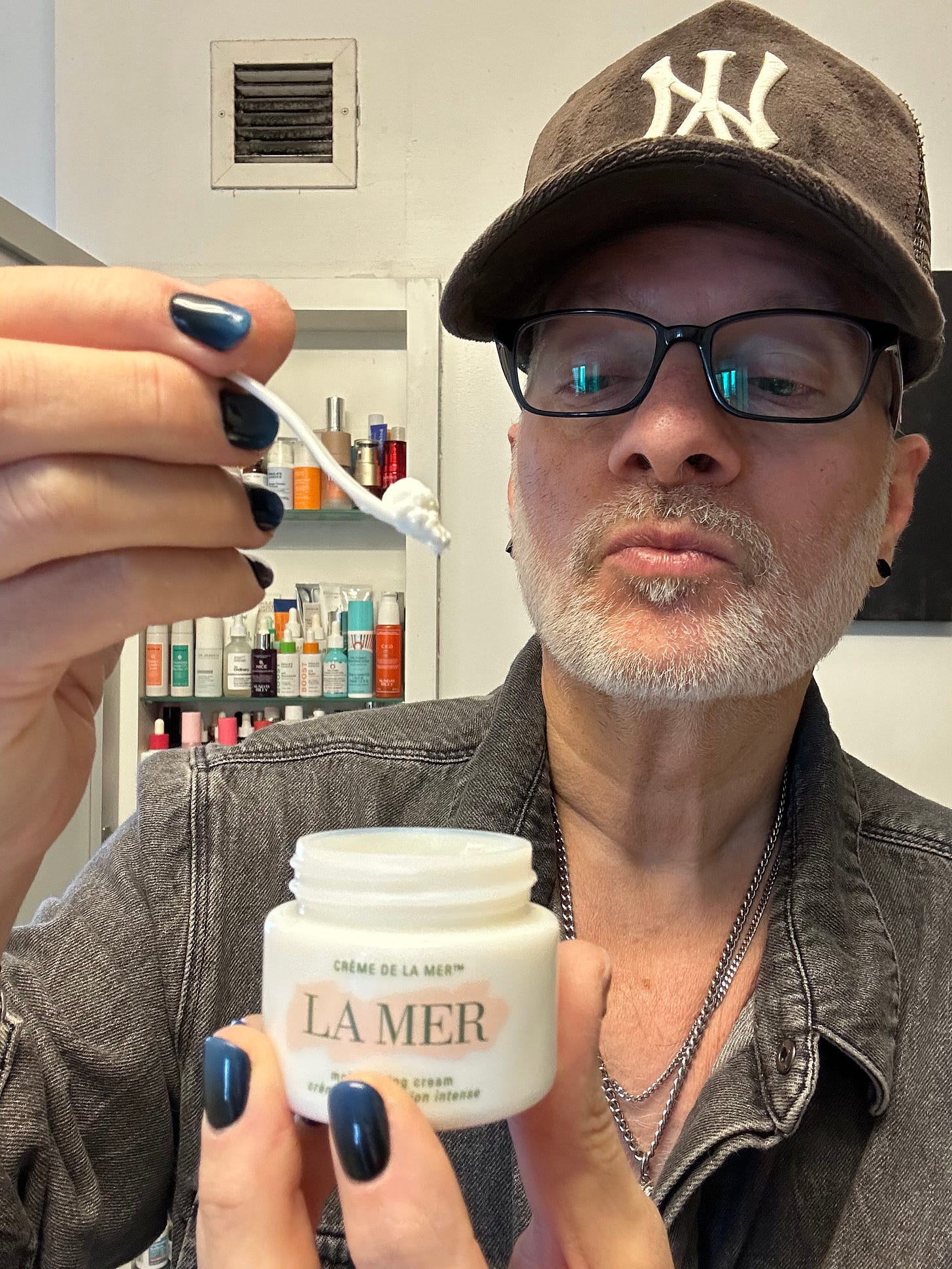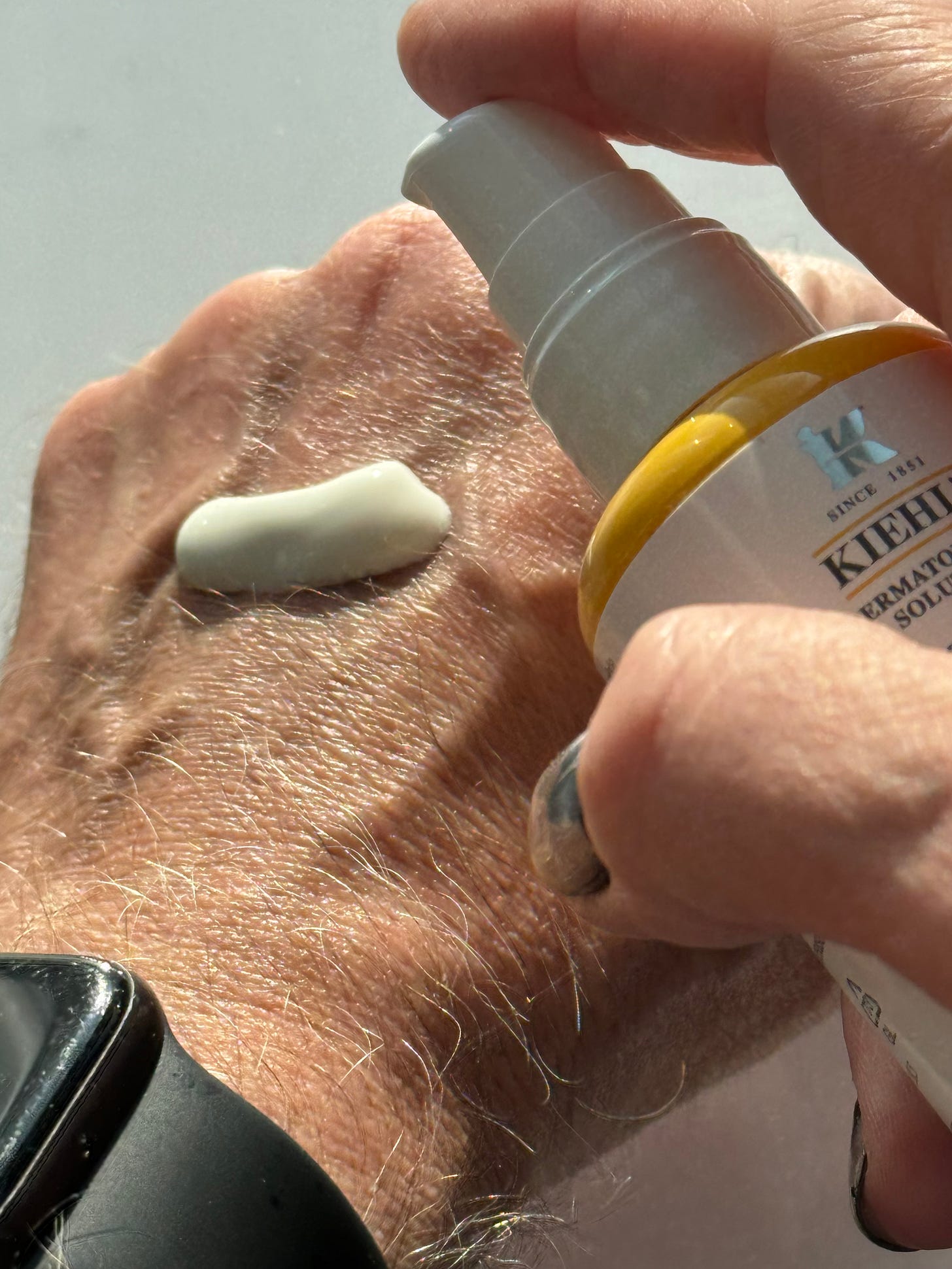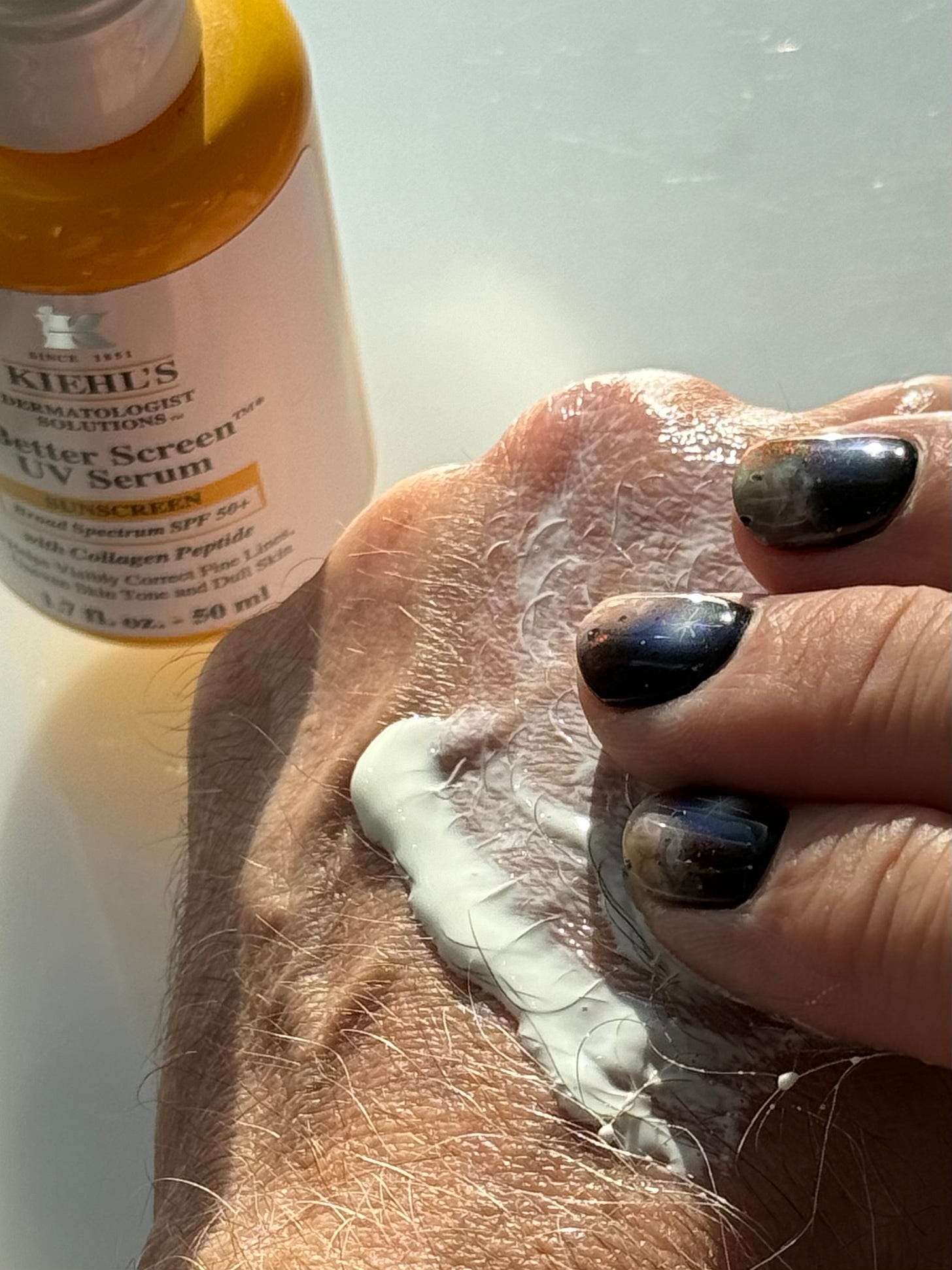The Biggest Marketing Scam in Skincare and Kiehl's New Better Screen UV Serum SPF 50+
Are $200+ anti-aging creams a scam?
I’ve been working in beauty for three decades now. And I have no doubt that the beauty industry long ago constructed a fake marketing scheme to sell more expensive products: anti-aging skincare.
To this day, anti-aging creams and serums are the most overpriced, over-hyped products in their line-ups. What are claimed to be the best anti-aging creams for wrinkles are nothing more than basic moisturizers supported by savvy advertising.
It’s the biggest ruse in skincare marketing – and maybe in all consumer marketing.
The prime example of this big beauty plot is La Mer’s iconic Crème de la Mer. At $200 for a one-ounce jar, it’s basically nothing more than a good daily moisturizer.
Don’t believe me? Check out the product’s ingredient list here. It’s a helluva lot of mineral oil, petrolatum and common plant oils. There’s no Retinol. No peptides. No potent antioxidants. And certainly no sunscreen. None of the powerhouse actives that are proven to improve skin health and that actually address signs of aging.
Since La Mer’s face cream was first introduced in the early 1960s, the beauty industry’s little scam hasn’t skipped a beat. In 2021 beauty’s biggest huckster today, the podiatrist Dr. Barbara Sturm, introduced her Super Anti-Aging Face Cream.
As with Crème de la Mer, unless you believe that plumping skin with moisture is justifiably “anti-aging,” there’s nothing super about Barbara Sturm’s $360 face cream that fights, prevents, or significantly improves the visible signs of aging.
The brand’s best product claim? That 100% of the 89 participants in a consumer perception study agreed their skin felt more hydrated. You can achieve that with a $10 moisturizer. In fact, you can get that same group of consumers to apply just about anything to their face and expect them to say it’s hydrating. Including water!
In the decades since La Mer first hit department store counters, rarely has a beauty brand marketed or even acknowledged a simple truth – that the most effective, important, even essential anti-aging product they offer is a basic facial sunscreen. That’s despite the fact that approximately 90% of premature skin aging can be attributed to photodamage, or sun damage.
At least brands continue to innovate with new, more pleasurable facial sunscreens! Every year, sunscreen textures and product blendability improve. And the new Kiehl’s Better Screen UV Serum SPF 50+ Sunscreen is one of the most pleasurable and best facial sunscreens to launch this year. My detailed review is just below.

But first…about that wild assertion I made above about how photodamage due to unprotected UV exposure is the cause of the vast majority of skin aging. Yes, the number is 90%!
There’s actually a scientific term for UV-induced skin aging: photoaging.
What is photoaging and is 90% of aging really caused by the sun?
Well, photoaging is the clinical description for the premature skin aging that occurs as a result of sun damage. Specifically, photoaging is caused by long-term exposure to ultraviolet (UV) radiation.
It is characterized by some of the most visible signs of aging, including wrinkles, fine lines, uneven pigmentation, and a loss of elasticity in the skin due to a breakdown of collagen. All of these are signs of photodamage. The simple fact is that wearing a facial sunscreen at the start of every day will help you prevent a whole lot of skin aging over the course of your life.
If you have a concern for signs of aging, you can bet that what you’re seeing was caused by sun damage – not some mysterious force you need to fight off with a light saber and an overpriced face cream! And yes, according to The Skin Cancer Foundation, up to 90% of the signs of aging is due to the photoaging that results from unprotected sun exposure...
“Responsible for 90 percent of visible changes to the skin, photoaging is a direct result of cumulative sun damage you’ve been exposed to throughout your life.”
Product Review
During the 7+ years that I worked in-house at Kiehl’s as the company’s first-ever copywriter, there were many maxims handed down by the founding Morse family. One of my favorites – and one which still holds true for me today – is that it is essential to wear sunscreen “even on cloudy, seemingly sunless days.”
That tidbit of Kiehl’s wisdom about the importance of sunscreen dates back decades, as early as the 70s. As a cosmetics department manager in my 20s, I had already embraced the indispensable benefits of a facial sunscreen when I got to Kiehl’s. But the founders’ message affirmed and reinforced it. In fact, I have never skipped a beat; I’ve applied a facial sunscreen every single morning since.
Today, I share that with others almost daily – with anyone who will listen!
Given the fact that most signs of skin aging are preventable with the consistent use of a daily facial sunscreen, it’s essential to find one that you love so much you would never skip it.
I have several daily sunscreens that I love, most notably the Paula’s Choice Youth-Extending Daily Hydrating Fluid SPF 50 Sunscreen and CeraVe’s Hydrating Sheer Sunscreen SPF 30 for Face and Body.
The new Kiehl’s Better Screen UV Serum SPF 50+ Sunscreen has fast become a fave since I first got my hands on it over the summer. It’s light, comfortable, melts right in – and feels like I’m applying a milky facial serum to my skin.
Kiehl’s Better Screen UV Serum SPF 50+ Sunscreen is a chemical sunscreen formulated with Avobenzone, Homosalate, Octisalate, and Octocrylene. The milky texture is perfect for a hot, summer day when the last thing you want is anything heavy on your face – especially a greasy sunscreen.
While Kiehl’s doesn’t claim that the Better Screen UV Serum is oil-free, it’s relatively free of oils. A close look at the INCI reveals that the lone ingredient that would be classified as an oil is Sunflower Seed Wax – at a very low concentration. Again, not oil-free but damn close.
While we’re on the subject of the product’s ingredient list…
On the product label, website and in marketing messaging, Kiehl’s highlights what it terms as “collagen peptide” – singular. There’s actually nothing in the INCI that directly alludes to a collagen peptide, though there are two literal peptides called out in the formula: Palmitoyl Tripeptide-1 and Palmitoyl Tetrapeptide-7 – both legitimate anti-aging peptides.
I have no idea how they’re classified by the brand as “collagen peptide,” but it’s just marketing. They also happen to be the last two ingredients in the entire ingredient list, making them relatively insignificant.
And I’m okay with that. Remember what I said about finding a sunscreen you love so much you would never skip it? Well, it’s very likely that if you try Kiehl’s Better Screen UV Serum SPF 50+ Sunscreen you will love it as much as I.
That’s the most important – and I’d argue only – factor when assessing a facial sunscreen, assuming it’s well-formulated. Does it feel great on your skin? Does it even feel like nothing on your skin? Do you enjoy applying it each morning?
With the Kiehl’s Better Screen UV Serum, the answer to those questions is likely to be yes. Just don’t call it an anti-aging serum.
Pros & Cons
What I like about it: The Kiehl’s Better Screen UV Serum SPF 50+ Sunscreen is one of the lightest and most pleasurable facial sunscreens to launch this year. It blends in well and feels like nothing on your skin, making it very likely that you’ll use it consistently. That’s the most important thing of all.
What I don’t like about it: That weird collagen peptide thing is more marketing than anything else. So, more actual collagen peptides (plural!) would be nice.
Who it’s for: All skin types, even sensitive skin. (It’s fragrance free.)
SHOP THE BLOG: Want to try it for yourself? Purchase the Kiehl’s Better Screen UV Serum SPF 50+ Sunscreen for $42 here.
Support + Shop the Blog!
Kiehl’s Better Screen UV Serum SPF 50+ Sunscreen
Paula’s Choice Youth-Extending Daily Hydrating Fluid SPF 50 Sunscreen









